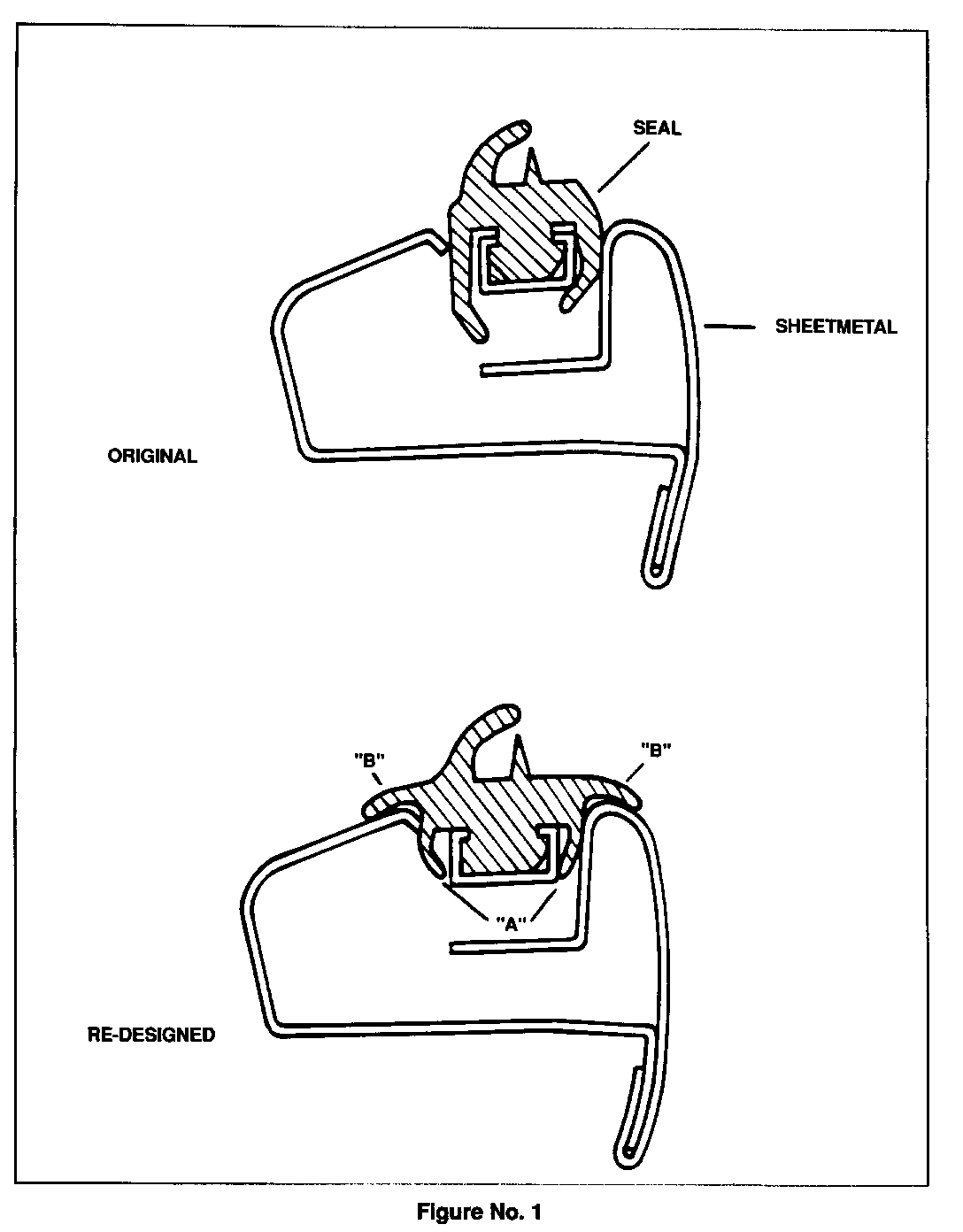FRONT COWL/VENT WINDOW WIND NOISE -REPLACE INSULATOR

MODELS: 1987-90 RN MODELS
Wind noise into the cab area, in the area of the C/V window, may be experienced in some 1987-1990 R/V models. If this condition occurs, a redesigned ventilator assembly is now available. The part numbers are listed below:
Left assembly with clear glass (P/N 15634471) Right assembly with clear glass (P/N 15634472) Left assembly with tint glass (P/N 15634473) Right assembly with tint glass (P/N 15634474)
Parts are currently available from GMSPO.
1990 R/V vehicles built after the following VIN breakpomts have the new ventilator assembly installed:
Flint GMC LF508103
The relevant change on the new C/V assembly was to the vent seal which now incorporates a double lip design. This difference is shown in Figure 1, and a brief description is listed below.
Installation
The installation instructions called out in the appropriate light duty service manual remain the same with the exception of the following: The inner lips "A" (Figure 1) are to lay inside the sheet metal while outer lips "B" (Figure 1) are to lay outside over the sheet metal. Additionally, after the assembly is installed and adjusted, look for a gap between the run channel (the vertical support of the vent window) and the outer weatherstrip, which is located at the base of the main window. If a gap exists, slide the outer weather strip forward until it contacts the run channel in order to seal the gap. See Figure 2.
IMPORTANT: If the vehicle experiencing wind noise is a Suburban, GMC bulletin number 89-10-A3 (Corporate Number 961003) on "Opera Window" wind noise should be r eferenced.
For vehicles repaired under warranty use:
Labor Op: C0080 (Right) C0081 (Left)
Labor Time: 0.6 Hrs. (each)


General Motors bulletins are intended for use by professional technicians, not a "do-it-yourselfer". They are written to inform those technicians of conditions that may occur on some vehicles, or to provide information that could assist in the proper service of a vehicle. Properly trained technicians have the equipment, tools, safety instructions and know-how to do a job properly and safely. If a condition is described, do not assume that the bulletin applies to your vehicle, or that your vehicle will have that condition. See a General Motors dealer servicing your brand of General Motors vehicle for information on whether your vehicle may benefit from the information.
